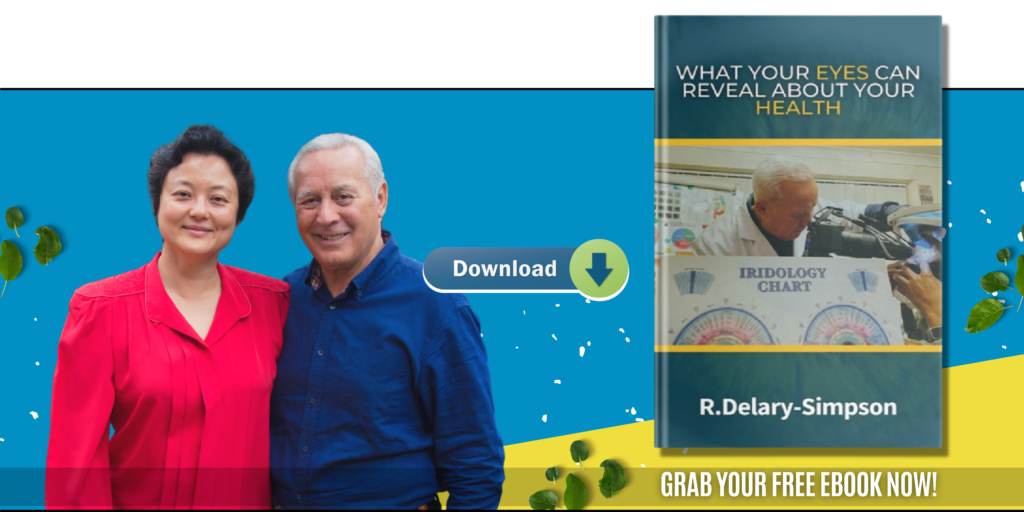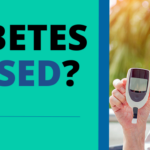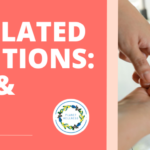Difference between Type 1 and Type 2 Diabetes
Diabetes is a prevalent disorder which tends to disrupt your body in using sugar (glucose) as a source of energy. Millions of individuals have to live with it in their day to day lives. But what you may not know, is that there are two different types of diabetes, Type 1 and Type 2, and the two are very different in the way they have happened and in the treatment of them both.
Throughout this article, we will describe the major differences between Type 1 and Type 2 diabetes in an understandable way that is easy to remember. Newly diagnosed patients, family members, and friends of people with diabetes and others who are just interested can learn about diabetes through this blog.
Diabetes signs you must not ignore | Spot the Symptoms Early
Are you or a loved one at risk of developing diabetes? In this informative video, we uncover the early warning signs of diabetes that everyone should know. From unexplained weight loss and excessive thirst to blurred vision and tingling sensations in the hands and feet, recognising these symptoms early can make all the difference in preventing serious health complications.
Diabetes Signs and Symptoms
What Is Diabetes, in General?
It would be good to get to know what diabetes is before getting into the differences.
Insulin is a hormone in your body that helps transfer sugar (glucose) out of your blood into your cells, where it is used to create energy. When you have diabetes, something gets amiss with this process. Your body either does not produce sufficient insulin or it is unable to utilize insulin. Consequently, excess sugar remains in your blood, a condition that with time may cause severe health issues.
What Is Type 1 Diabetes?
Type 1 diabetes is an autoimmune condition. It implies that the immune system of the body goes wrong by attacking the insulin-producing cells of the pancreas. Once this occurs, insulin production in the body is halted.
Who usually gets it?
Type 1 diabetes usually begins in childhood, adolescence, or young adulthood; nevertheless, it may occur at any age.
Cause
No one knows the precise cause but it is thought that it is a combination of both genetics and environmental triggers (such as some viruses).
Is it preventable?
No. Type 1 diabetes is not preventable as contrasted with Type 2 diabetes.
Treatment
Type 1 diabetics need to receive insulin daily in order to make it through; either with injections or an insulin pump. They must also monitor their blood sugar levels, many times per day.
What Is Type 2 Diabetes?
The more prevalent one is type 2 diabetes. It occurs when the body has ineffective use of insulin (termed as insulin resistance), and as the condition advances, the pancreas may no longer be able to produce enough insulin.
Who usually gets it?
Type 2 diabetes normally occurs in adults more than 40 years old, but in this age of obesity it is increasingly being diagnosed in younger adults, even adolescents and children.
Cause
Lifestyle causes often associated with Type 2 diabetes include being overweight, lack of physical exercise, poor diet, and family history.
Is it preventable?
Yes! Healthy lifestyle choices, which include eating healthy, being physically active, and having a healthy weight can prevent or postpone type 2 diabetes.
Treatment
Other Type 2 diabetics are able to manage it by diet alone and exercise alone. Some may require oral drugs or insulin. Blood sugar checks are also important on a regular basis.
Main Differences Between Type 1 and Type 2 Diabetes
The major distinctions between the two types of diabetes can be explained by the following brief outline:
Cause
- Type 1: Type 1 is provoked by the immune system which destroys insulin-making cells in your pancreas (an autoimmune disease).
- Type 2: Contextually, it is brought about by the body developing insulin resistance, and failing to take advantage of insulin with the passage of time.
Insulin Production
- Type 1: The body either produces minimal or no insulin.
- Type 2: Insulin is produced in the body although it is ineffective.
How It Starts
- Type 1: Occurs suddenly and in most cases within a few days or weeks.
- Type 2: The onset is gradual and in many cases does not show symptoms immediately.
Age of Diagnosis
- Type 1: Most frequent in children, teens or young adults – though it may occur at any age.
- Type 2: It is most prevalent in adults, more than 40 years old but increasingly becoming prevalent among teens and children.
Treatment
- Type 1: This type of diabetes requires life-long insulin injections or insulin pumps.
- Type 2: Can be treated through lifestyle modifications, oral medication, or insulin where necessary.
Prevention
- Type 1: Prevention is not possible.
- Type 2: Can be often prevented by eating healthy, exercising and controlling weight.
Common Symptoms
- Type 1: An abrupt weight loss, increased thirst, excessive urination, fatigue.
- Type 2: Fatigue, constant infections, slow healing wounds, blurred vision– symptoms take longer to manifest.
Shared Symptoms of Diabetes
Although Type 1 and Type 2 are not alike in terms of the cause and treatment, their symptoms may be similar:
- Feeling very thirsty
- Frequent urination
- Unexplained weight loss
- Being fatigued most of the time
- Blurred vision
- Slow healing cuts or sores
When you or a person you know starts to have these symptoms, you should visit a doctor and take a test to diagnose diabetes.
Why Early Diagnosis Matters
It is important to detect diabetes early (be it Type 1 or Type 2), so as to avoid serious complications to health. Without treatment, elevated blood sugar levels may harm the following:
- Eyes (leading to blindness)
- Kidneys (which results in kidney failure)
- Nerves (that cause pain or numbness)
- Heart (heart attack and stroke)
The sooner you get control over your blood sugar, the healthier you will be in the long run.
Can Either Type Be Cured?
- Type 1 diabetes is incurable, and individuals with this type will constantly require insulin.
- There is no cure to type 2 diabetes as well but it may be reversed or placed under remission by observing proper diet, exercise, weight loss and medication when necessary.
When some individuals with Type 2 diabetes lose weight and adhere to a rigid healthy lifestyle, they can reduce their blood sugar to normal ranges, and may not require medication any more, although they must remain vigilant, because they can relapse.
Living Well with Diabetes
Regardless of the type you possess, you can have a good and healthy lifestyle. Millions of individuals across the globe live with the condition of diabetes by:
- Having a healthy diet (including avoiding sugar, processed food and bad fats)
- Exercising regularly
- Monitoring their blood sugar level
- Taking medication or insulin as prescribed, when necessary
- Decreasing stress and sleeping well
Doctors, as well as diabetes educators, iridologists, nutritionists, and family support can also make a difference.
What are the types of diabetes? Are there any remedies to it? What are the right foods in battling diabetes?
Different Types of Diabetes and How To Treat Them
Conclusion
Although Type 1 and Type 2 diabetes share the issue with blood sugar and insulin, it is highly different regarding the causes, treatment, and prevention.
- Type 1 is an autoimmune disease which typically begins when one is young and requires the use of insulin.
- Type 2 is largely attributed to lifestyle and can frequently be treated (or rather reversed) through good habits.
Understanding the differences may assist you to know more about your health or guide someone in your family who is going through diabetes. What lesson can you take away? Knowledge is power—and action is healing.
This article is for educational purposes only and not a substitute for professional and personalized medical advice. Always seek diagnosis and treatment from a qualified healthcare provider, which is specific to your own case.
We offer both a Beginner’s Diabetes Introductory Course and an Advanced Course, These courses provide detailed explanations on managing or preventing Diabetes effectively. Investing in yourself and your body is crucial, as ultimately, everything else is materialistic. Feel free to explore our courses!
Discover the holistic approach to managing Diabetes in our FREE booklet ‘Best Ways To Treat Diabetes’. From this guide, you will learn the various treatments that can be done at home, foods to avoid and those you need to include in your diet, among other essential information. Download your FREE copy today and start the journey to take control of your life and prevent Diabetes.
Embark on a transformative journey towards better health when you purchase our book, “THE DIABETES SOLUTION: A 28 DAY ACTION PLAN FOR LOWERING BLOOD SUGAR NATURALLY”. A wealth of information derived from years of experience in helping people with Diabetes and other health issues can be found in our #1 bestselling book on Amazon. Drawing from a diverse clientele spanning continents and cultures, we have curated a comprehensive action plan rooted in natural remedies and time-tested practices. This book is an indispensable companion, whether you are Diabetic, Prediabetic or looking for preventive action. Give yourself the power to take control of your health and see remarkable results, from nutritious recipes to invaluable advice on living a healthy life. You will be guided by the “THE DIABETES SOLUTION” to a healthier and happier future!
To learn more about Diabetes, check out our other related blogs:
Types of Diabetes : Identification, Causes and More
Diabetes – What It Is, Causes, Symptoms, Treatment & Types
What are the different types of Diabetes?
Diabetes and your eyes – what you need to know
Diabetes – symptoms and causes
Which Type Of Diabetes Is Worse?




